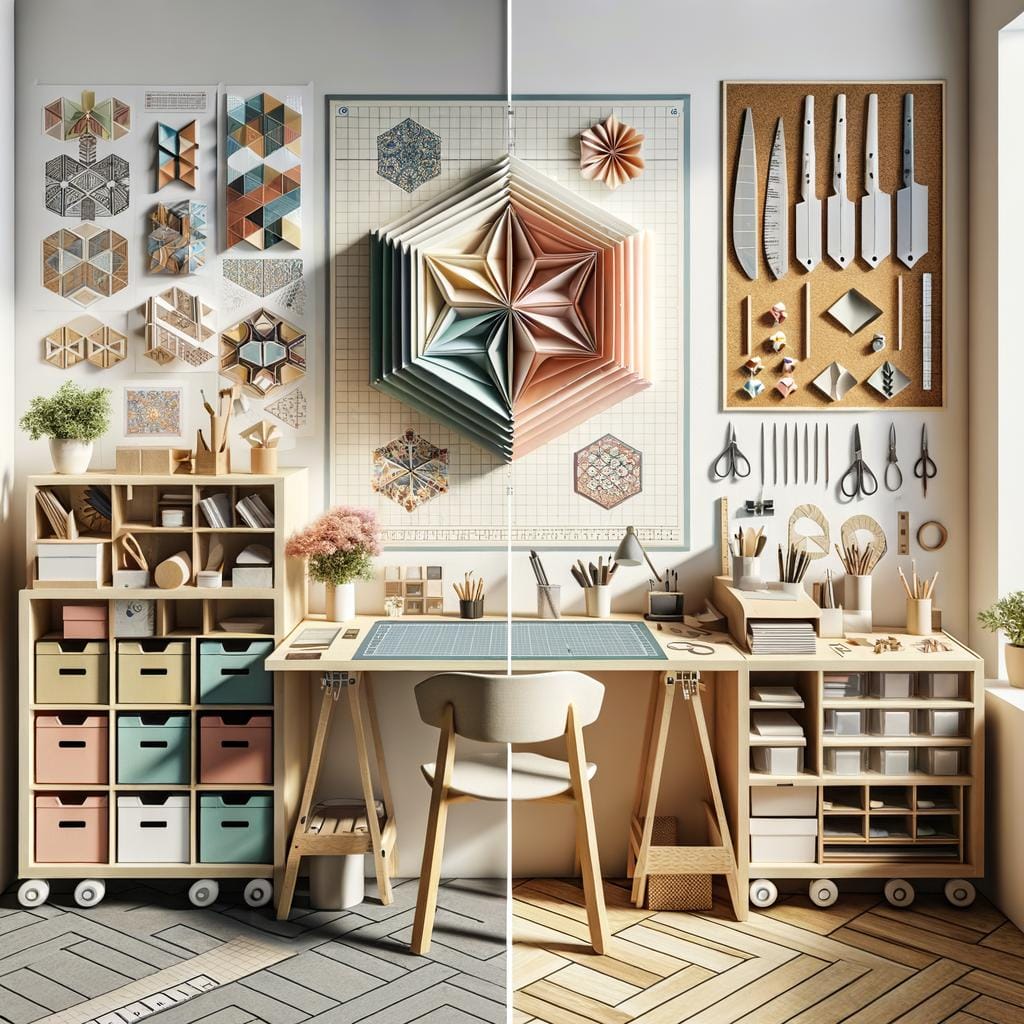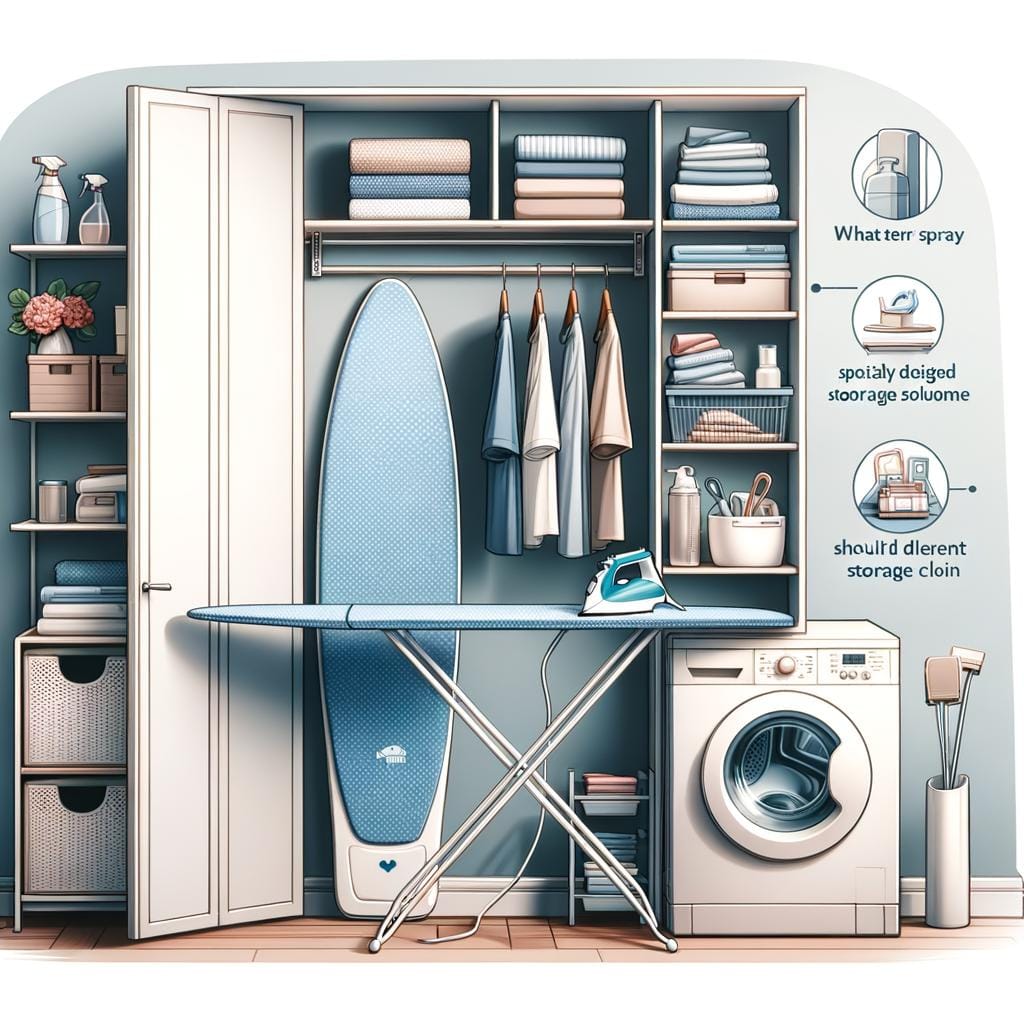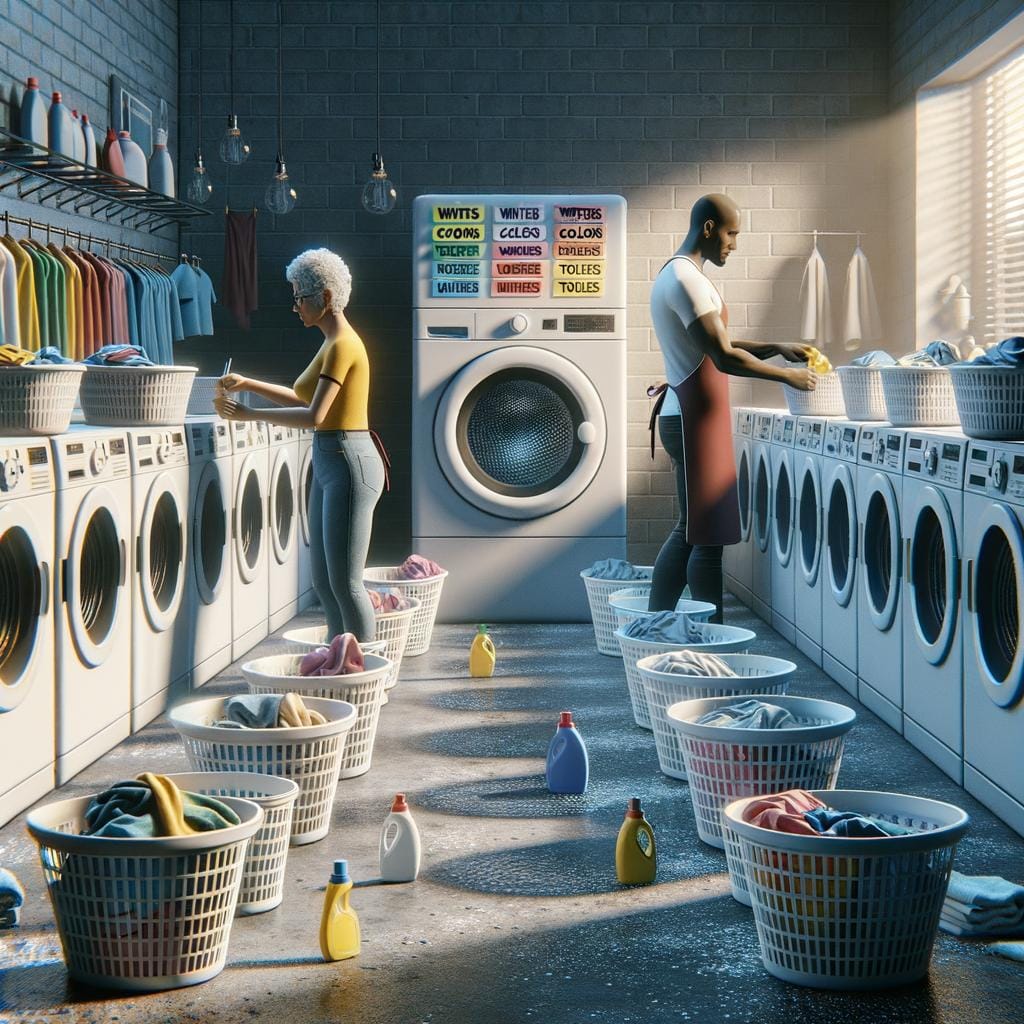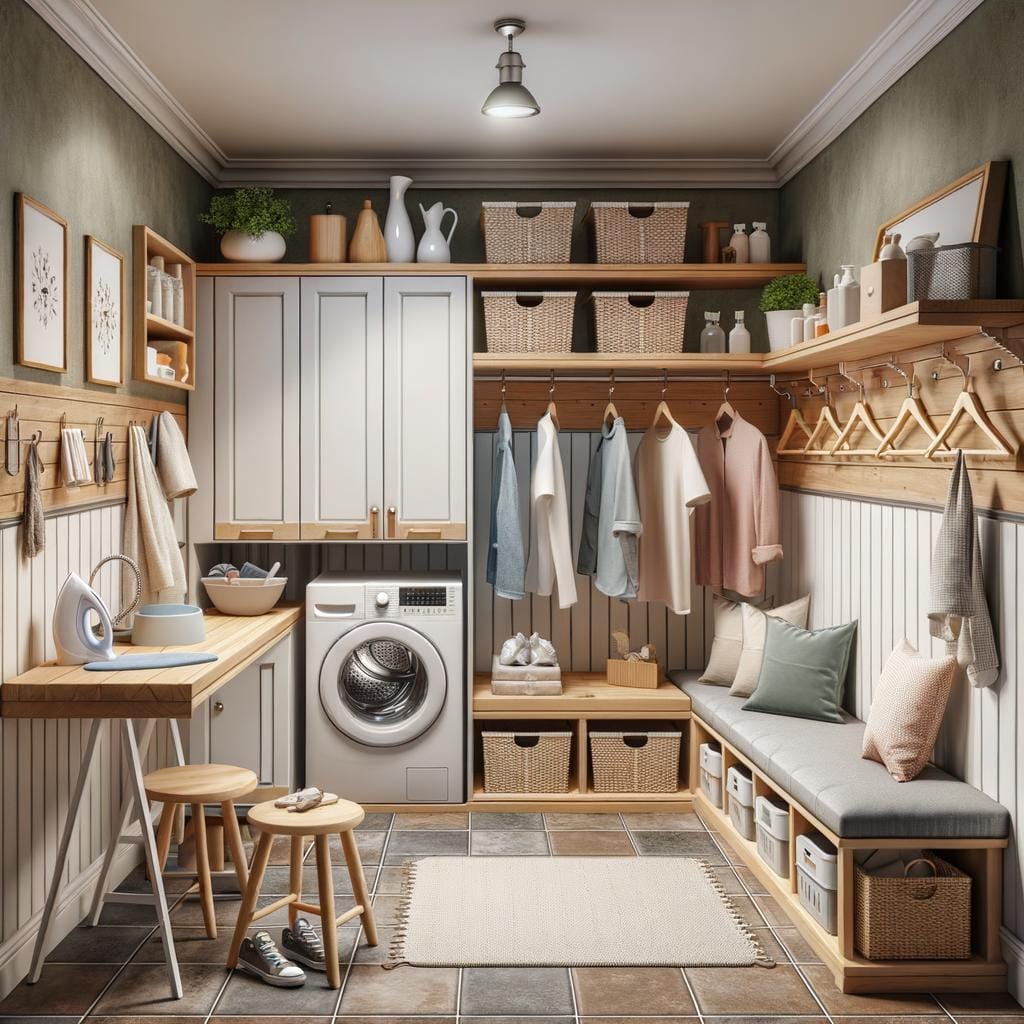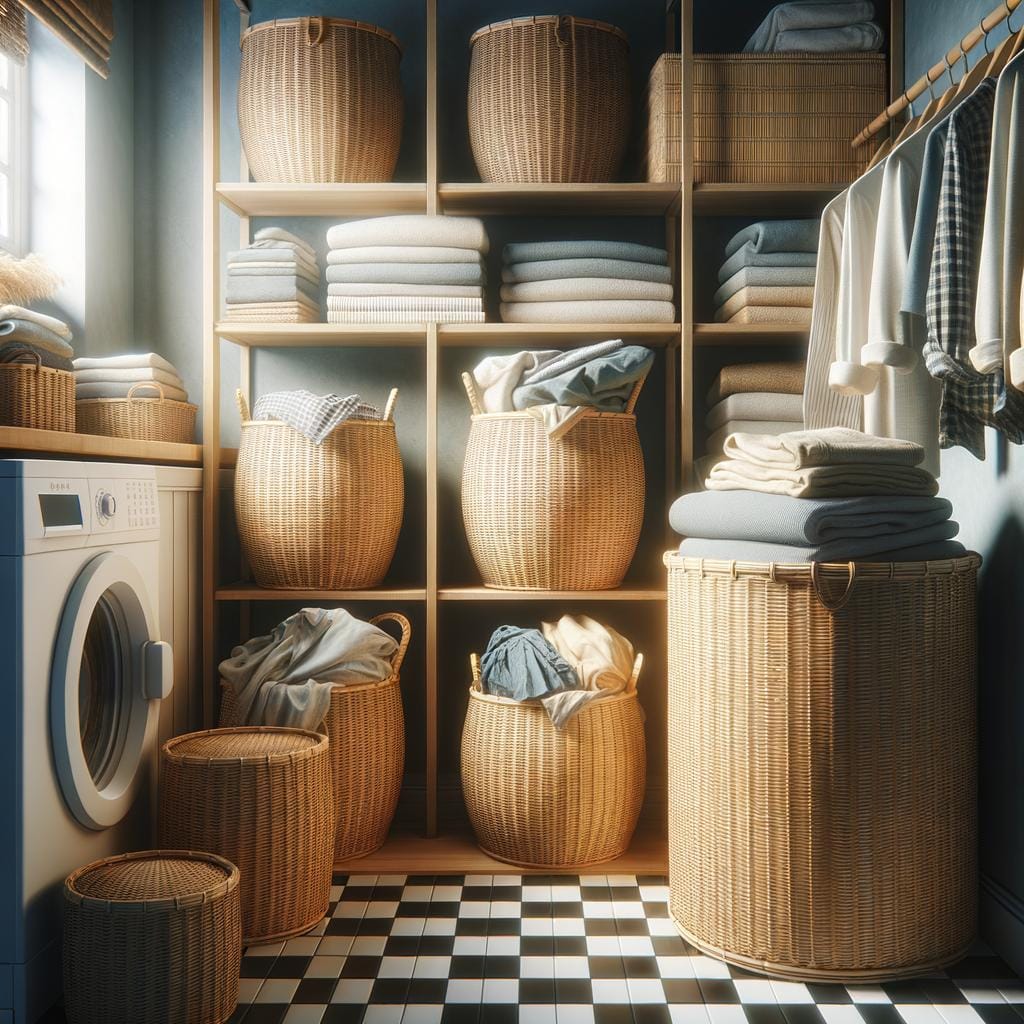Efficient and functional folding area designs are essential in maximizing space and organization within our homes. From small apartments to large houses, having a well-designed folding area can make daily chores like laundry, ironing, and organizing clothes much more convenient. Whether it’s a wall-mounted, freestanding, built-in, or multi-functional design, the layout of this area plays a crucial role in efficient use of space.
When considering folding area designs, various factors come into play. Space availability, storage needs, budget constraints, and personal preferences all influence the type of design that would work best for each individual. It’s important to assess these factors before diving into a project to ensure that the final result meets both functional and aesthetic requirements.
In this article, we will explore the different types of folding area designs available, provide tips on maximizing small spaces with space-saving solutions, present creative DIY ideas for those on a budget, highlight popular materials and finishes used in modern designs, offer maintenance tips for longevity, and showcase real-life examples for inspiration. With the right design and considerations in place, creating an efficient folding area can transform any space into a organized haven.
Types of Folding Area Designs
When it comes to creating efficient and functional folding areas in your home, there are various types of designs to choose from. Each type offers its own set of benefits and features that can cater to different needs and preferences. From wall-mounted options to freestanding units, built-in solutions, and multi-functional designs, the possibilities are endless when it comes to organizing your space effectively. Let’s explore some of these types in more detail.
Wall-Mounted Folding Areas
Wall-mounted folding areas are perfect for small spaces where floor real estate is limited. These designs typically feature collapsible components that can be folded against the wall when not in use, maximizing space efficiency. They are commonly found in laundry rooms, kitchens, or even bedrooms where a compact workstation is needed. Wall-mounted folding areas can often be customized with additional storage shelves or cabinets for added functionality.
Freestanding Folding Areas
Freestanding folding areas are versatile solutions that can be placed anywhere in a room without the need for installation or mounting. These designs usually come in the form of tables or carts with foldable legs or surfaces that can be expanded or collapsed depending on the task at hand. Freestanding folding areas are great for multipurpose rooms or areas where flexibility is key, such as dining spaces that require extra seating only when guests are over.
Built-in and Multi-Functional Designs
Built-in folding areas are custom-made solutions that seamlessly blend into existing cabinetry or furniture, creating a streamlined look while optimizing functionality. These designs are ideal for homeowners looking for a cohesive and integrated storage solution that caters specifically to their needs.
On the other hand, multi-functional folding area designs combine various features like storage compartments, adjustable heights, and swivel mechanisms to provide maximum versatility in one unit. Whether it’s a Murphy bed with a built-in desk or a kitchen island with hidden fold-out workspace, these designs offer practicality without compromising style.
By considering these different types of folding area designs, homeowners can find the perfect solution that meets their space requirements and aesthetic preferences. Whether you opt for a wall-mounted setup for compact living or invest in a multi-functional design for enhanced versatility, incorporating efficient folding areas into your home design will undoubtedly improve organization and productivity in various living spaces.
Factors to Consider
Folding area designs play a crucial role in optimizing space and enhancing functionality within a home. When considering different folding area designs, there are several factors that need to be taken into account to ensure that the chosen design not only meets your needs but also complements your lifestyle.
One of the primary considerations is space availability. Whether you have a small apartment or a spacious house, it is essential to choose a folding area design that fits seamlessly into your available space without compromising on usability.
Another important factor to consider is storage needs. Depending on what items you plan on folding and storing in the designated area, you may require additional shelves, drawers, or compartments to keep everything organized and easily accessible. Budget is also a key consideration when selecting a folding area design.
There are options available for every budget range, from simple DIY solutions to high-end custom-built designs. It’s essential to set a budget beforehand and explore options that align with your financial constraints.
Personal preferences should not be overlooked when choosing a folding area design for your home. Whether you prefer a sleek and modern look or a rustic and cozy feel, there are folding area designs available to suit every style preference. Considering these factors will help you narrow down your choices and select the perfect folding area design that not only meets your practical needs but also complements your personal taste and aesthetic preferences.
| Factors | Considerations |
|---|---|
| Space availability | Choose a design that fits seamlessly into your available space |
| Storage needs | Determine if additional storage components are necessary for organization |
| Budget | Set a budget and explore options within your financial constraints |
Space-Saving Solutions
Another way to maximize small spaces with folding area designs is by customizing the layout to fit specific needs. For example, incorporating built-in folding shelves or cabinets can create a seamless look while providing ample storage for various items.
By carefully planning the layout and utilizing vertical space efficiently, even the smallest areas can be transformed into functional and stylish folding spaces. Moreover, exploring versatile design options like fold-out desks or pull-out ironing boards can further enhance the functionality of the space.
Incorporating clever storage solutions like pull-out bins or hidden compartments within folding area designs can help maintain an organized and clutter-free environment. By optimizing every inch of available space and integrating smart storage solutions, small areas can be utilized in a way that maximizes efficiency and convenience. Additionally, selecting space-saving furniture pieces with sleek designs and finishes can elevate the overall aesthetic appeal of the folding area while ensuring practicality and functionality.
| Tip | Description |
|---|---|
| Multi-functional Furniture | Consider furniture pieces that serve dual purposes to save space. |
| Built-in Storage | Create a seamless look with built-in shelves or cabinets for extra storage. |
| Clever Storage Solutions | Use pull-out bins or hidden compartments to maintain an organized environment. |
DIY Folding Area Projects
When it comes to creating a functional and efficient folding area in your home, DIY projects can be a great budget-friendly option. With a little creativity and some basic tools, you can design custom folding areas that perfectly suit your needs. Here are some creative DIY ideas for creating custom folding areas on a budget:
- Fold-Down Wall Table: Transform a blank wall into a versatile folding area by installing a fold-down wall table. This space-saving solution is perfect for small kitchens or compact living spaces where every inch counts.
- Floating Shelves with Fold-Out Desks: Maximize vertical space in your home office or study area by installing floating shelves with fold-out desks. These sleek and practical designs provide ample workspace when needed and fold away neatly when not in use.
- Laundry Folding Station: Create a dedicated folding area in your laundry room by repurposing an old dresser or cabinet. Add a hinged tabletop to the top surface for easy folding, and use the drawers below for storing laundry essentials.
These DIY projects offer endless possibilities for customizing your folding area to fit your unique style and space requirements. By incorporating these creative ideas into your home, you can optimize functionality without breaking the bank. Whether you’re looking to save space in a small apartment or organize a busy household, DIY folding area projects are the perfect solution.
- Murphy Bed with Folding Desk: For guest rooms or multipurpose spaces, consider building a Murphy bed with an attached folding desk. This clever design allows you to create a comfortable sleeping area that converts into a functional work station during the day.
- Fold-Up Ironing Board: Make ironing chores more manageable by installing a fold-up ironing board in your laundry room or closet. This discreet design saves valuable floor space and provides a convenient spot for quick touch-ups.
- Collapsible Craft Table: If you’re an avid crafter or artist, build a collapsible craft table that can be folded down when not in use. This portable and compact design is ideal for small hobby rooms or shared creative spaces.
With a little creativity and effort, you can transform any corner of your home into an organized and functional folding area that meets your specific needs without breaking the bank. Experiment with different materials, finishes, and configurations to create personalized folding solutions that enhance both the form and function of your living space. Start brainstorming today and get ready to enjoy the benefits of practical and stylish folding area designs throughout your home.
Popular Materials and Finishes
When it comes to designing functional folding areas, the choice of materials and finishes plays a crucial role in not only the aesthetic appeal but also the durability and practicality of the space. Modern folding area designs often incorporate a variety of materials and finishes to achieve a perfect balance between style and functionality. Let’s explore some of the most popular options that are commonly used in today’s folding area designs.
Wood
One of the timeless choices for folding area designs is wood. Whether it’s solid wood, engineered wood, or wood veneer, this natural material adds warmth and elegance to any space. Wood can be stained, painted, or left untreated for a more rustic look, making it versatile for different design preferences. It also offers durability and longevity, making it a popular choice for those looking for a long-lasting folding area solution.
Metal
For a more contemporary look, metal is often used in modern folding area designs. Materials like steel, aluminum, and iron provide a sleek and industrial feel to the space. Metal is known for its strength and stability, making it ideal for supporting foldable surfaces or structures. Additionally, metal finishes such as powder coating or anodizing offer protection against corrosion and wear, ensuring that your folding area maintains its visual appeal over time.
Laminate
Laminate is another common choice for folding area designs, especially in spaces where durability and ease of maintenance are top priorities. Laminate surfaces are versatile in terms of colors and patterns, allowing for endless design possibilities.
They are also resistant to scratches, stains, and moisture, which makes them ideal for high-traffic areas like laundry rooms or kitchen folding areas. With advancements in laminate technology, you can now find options that mimic the look of natural materials like wood or stone without the high cost or maintenance requirements.
Maintenance Tips
Proper maintenance is crucial in ensuring the longevity and functionality of folding area designs. By following some simple tips and routines, you can keep your folding areas looking great and working efficiently for years to come. Here are some maintenance tips to consider:
- Regular Cleaning: Dust, dirt, and grime can build up on folding area designs over time, affecting their appearance and functionality. Make sure to regularly clean all surfaces with a gentle cleanser or a damp cloth to prevent buildup.
- Inspect for Damage: Periodically check your folding areas for any signs of wear and tear, such as loose hinges, scratches, or dents. Addressing these issues promptly can prevent further damage and prolong the lifespan of your design.
- Lubricate Moving Parts: If your folding area design includes moving parts like hinges or sliders, make sure to lubricate them regularly to ensure smooth operation. Use a silicone-based lubricant to prevent rust and reduce friction.
In addition to regular upkeep, there are some specific maintenance tasks that can help preserve the beauty and functionality of your folding area designs:
- Protective Coatings: Consider applying a protective coating or sealant to the surfaces of your folding areas to protect them from spills, stains, and scratches. This extra layer can extend the life of your design while maintaining its appearance.
- Preventative Measures: Take precautions to prevent unnecessary strain on your folding area designs. Avoid overloading shelves or storage compartments beyond their weight capacity, and be mindful of how you fold or unfold the design to avoid damage.
- Professional Maintenance: For more complex folding area designs or if you’re unsure about how to properly maintain them, consider hiring a professional for periodic inspections and upkeep. They can provide expert care and address any issues before they become bigger problems.
By incorporating these maintenance tips into your routine, you can ensure that your folding area designs remain functional, attractive, and durable for years to come. Taking care of these innovative space-saving solutions will not only enhance their longevity but also contribute to the overall efficiency and aesthetics of your living space.
Real-Life Examples
Efficient and functional folding area designs are essential for maximizing space and organization in a home. Whether it’s a wall-mounted, freestanding, built-in, or multi-functional design, the layout of a folding area can greatly impact daily tasks and overall convenience. By carefully considering factors such as space availability, storage needs, budget constraints, and personal preferences, individuals can create a folding area that perfectly suits their lifestyle.
For those looking to make the most out of limited space, there are various space-saving solutions that can be implemented in designing a folding area. From utilizing vertical wall space to incorporating pull-out drawers and hidden compartments, there are endless possibilities for optimizing small areas with innovative folding area designs. These solutions not only offer practical benefits but also add a touch of creativity and style to any room.
When it comes to creating a custom folding area on a budget, DIY projects can be both fun and cost-effective. With some creativity and basic tools, individuals can design unique folding areas tailored specifically to their needs.
Whether it’s repurposing old furniture or using unconventional materials, DIY enthusiasts can bring their vision to life while adding a personal touch to their living spaces. By exploring different materials and finishes commonly used in modern folding area designs, individuals can find inspiration for creating their own functional yet stylish folding areas at home.
Frequently Asked Questions
What Is the Best Surface for Folding Clothes?
The best surface for folding clothes is a flat and clean tabletop or countertop. This provides a smooth and stable area to neatly fold clothes without any wrinkles or creases. It also makes it easier to organize different clothing items.
Do T-Shirt Folding Boards Work?
T-shirt folding boards can be quite useful in achieving perfectly folded shirts with uniform sizes. They provide a structured guide on how to fold the shirt correctly, ensuring consistency in folding results. However, they may not be necessary for everyone’s laundry routine.
Is a Laundry Folding Board Worth It?
A laundry folding board can be worth it for individuals who struggle with folding clothes neatly or efficiently. It helps simplify the process by providing a template to follow, making it easier to achieve consistent and organized folds. However, its value depends on personal preferences and needs.

Hello, I’m April Denton, your go-to expert for all things home decluttering and organization. With over a decade of experience helping individuals transform their living spaces into serene, clutter-free sanctuaries, I am passionate about the life-changing benefits of decluttering. My journey into the world of organization began out of necessity, juggling a busy career and a bustling household. I quickly realized that a well-organized home was the key to a more balanced, stress-free life.

